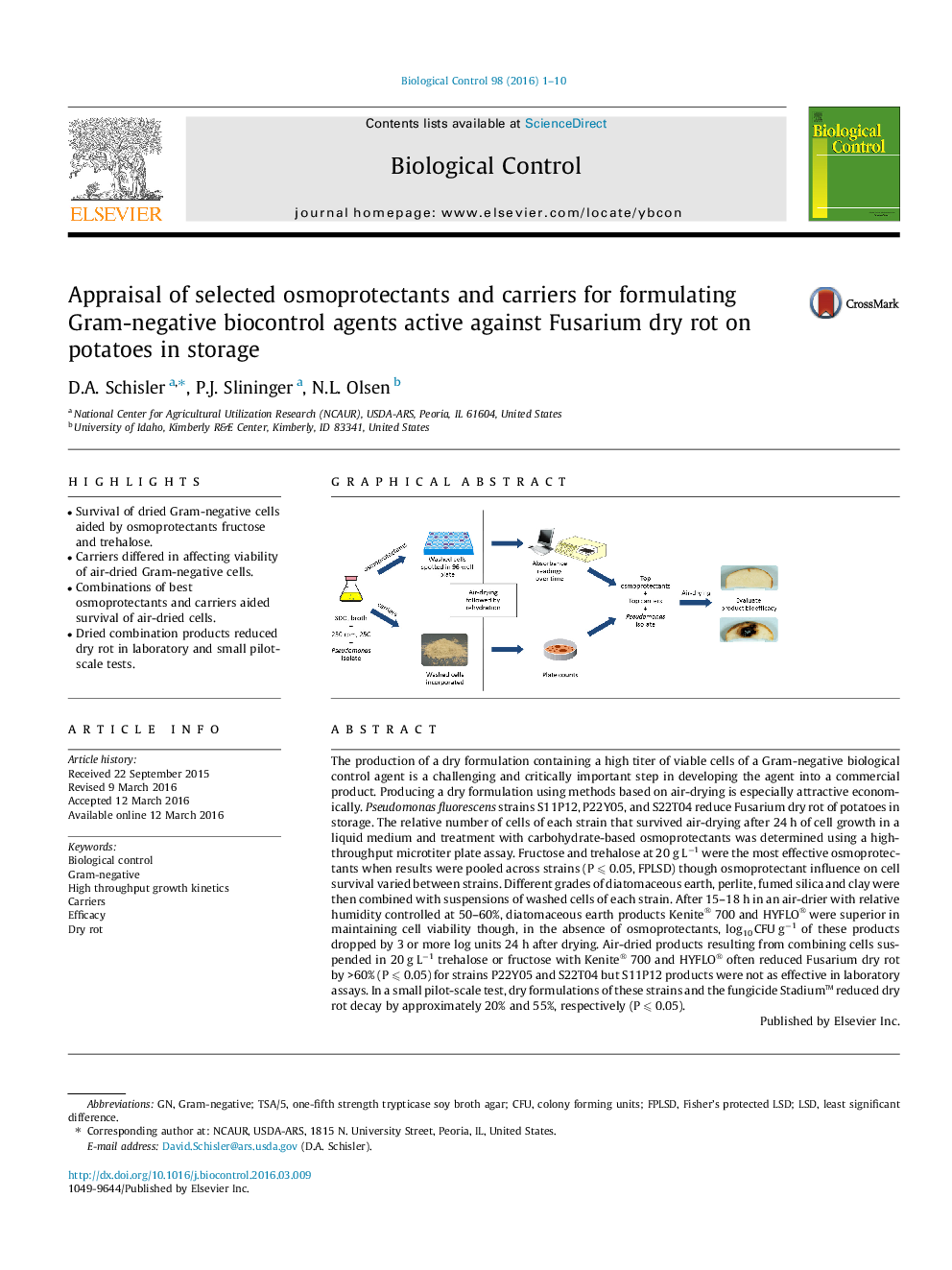| Article ID | Journal | Published Year | Pages | File Type |
|---|---|---|---|---|
| 4503622 | Biological Control | 2016 | 10 Pages |
•Survival of dried Gram-negative cells aided by osmoprotectants fructose and trehalose.•Carriers differed in affecting viability of air-dried Gram-negative cells.•Combinations of best osmoprotectants and carriers aided survival of air-dried cells.•Dried combination products reduced dry rot in laboratory and small pilot-scale tests.
The production of a dry formulation containing a high titer of viable cells of a Gram-negative biological control agent is a challenging and critically important step in developing the agent into a commercial product. Producing a dry formulation using methods based on air-drying is especially attractive economically. Pseudomonas fluorescens strains S11P12, P22Y05, and S22T04 reduce Fusarium dry rot of potatoes in storage. The relative number of cells of each strain that survived air-drying after 24 h of cell growth in a liquid medium and treatment with carbohydrate-based osmoprotectants was determined using a high-throughput microtiter plate assay. Fructose and trehalose at 20 g L−1 were the most effective osmoprotectants when results were pooled across strains (P ⩽ 0.05, FPLSD) though osmoprotectant influence on cell survival varied between strains. Different grades of diatomaceous earth, perlite, fumed silica and clay were then combined with suspensions of washed cells of each strain. After 15–18 h in an air-drier with relative humidity controlled at 50–60%, diatomaceous earth products Kenite® 700 and HYFLO® were superior in maintaining cell viability though, in the absence of osmoprotectants, log10 CFU g−1 of these products dropped by 3 or more log units 24 h after drying. Air-dried products resulting from combining cells suspended in 20 g L−1 trehalose or fructose with Kenite® 700 and HYFLO® often reduced Fusarium dry rot by >60% (P ⩽ 0.05) for strains P22Y05 and S22T04 but S11P12 products were not as effective in laboratory assays. In a small pilot-scale test, dry formulations of these strains and the fungicide Stadium™ reduced dry rot decay by approximately 20% and 55%, respectively (P ⩽ 0.05).
Graphical abstractFigure optionsDownload full-size imageDownload as PowerPoint slide
